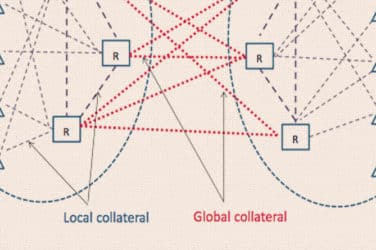
Clearstream, Deutsche Börse’s central securities depository, has joined TARGET2-Securities and doubled volumes on the platform which harmonizes securities settlement across the European Union.
During the weekend of 3 to 5 February, Clearstream Banking Frankfurt and LuxCSD joined the European Central Bank’s T2S platform in the fourth migration wave alongside the central securities depositories of Hungary, Slovenia, Slovakia and Austria.
Clearstream said in a statement: “The first business day is already in process and runs smoothly.”
T2S allows settlement in central bank money across borders, central securities depositories and currencies so there is no difference between domestic and cross-border transactions. The settlement platform began operating in 2015 after being launched by the European Central Bank in 2008 to end fragmentation in securities settlement across the Eurozone as the cost of cross-border transactions could be 10 times more expensive than domestic transactions.
The migration of Clearstream as the largest T2S participant has added about 40% to the overall volume on the ECB’s settlement platform. The latest wave has led to a doubling of current volumes and means that more than 80% of the total volume has now been migrated to the platform.
Euroclear Group tweeted: “Congrats @T2SECB and all Wave 4 CSDs for a successful #T2S migration! Another important step for European market harmonization.”
Patrick Georg, chief executive of LuxCSD, said in a statement: “It forms an important pillar in the vision of a Capital Markets Union and contributes to the integration of the European financial market infrastructure by further improving the stability and integrity of the European market.”
LuxCSD said T2S is more than just a settlement platform as it represents a fundamental reshaping of European capital markets.
T2S could help banks to reduce their capital requirements, gain access to central bank money for settlement, minimise asset fragmentation, increase settlement netting possibilities and simplify back office operations and network management
Berthold Kracke, chief executive of Clearstream Banking, said in a statement that the successful conclusion of the fourth T2S migration wave brings T2S very close to the finishing line.
Kracke said in a blog: “Last weekend was by no means an ordinary one. Yes, there were weekend morning breakfasts, coffee and orange juice, and yes, we were not in our business suits. But that was as far as it went in terms of weekend normality.”
Members of the team spent most of the weekend at the Frankfurt headquarters, or in Luxembourg or Prague as they set to work in shifts to implement the migration.
“For Clearstream, the ECB and the other CSDs involved, this brings a ten-year long project to fruition,:” added Kracke. “As I have been saying to colleagues and customers, this is the start of a new era. So I think we have every reason to pause a moment and pat ourselves on the back (even if those settlement transactions are never allowed to pause).”
Last month the seventh T2S Harmonisation Progress Report from the T2S Advisory Group said the CSDs that joined in the first three migration waves had achieved a high compliance rate, except for corporate action standards.
“Corporate action processes are complex business processes for asset servicing involving rules and procedures developed by a range of different actors,” said the report. “Gaps are still present, but T2S markets have been working hard to address them. This is exemplified in the increased statistical compliance rates for most T2S markets.”
There are still regulatory and legal barriers that need to be removed for further harmonization. These are being reviewed by the European Post Trade Forum, set up by the European Commission, as part of the initiative for the Capital Markets Union across the region.


